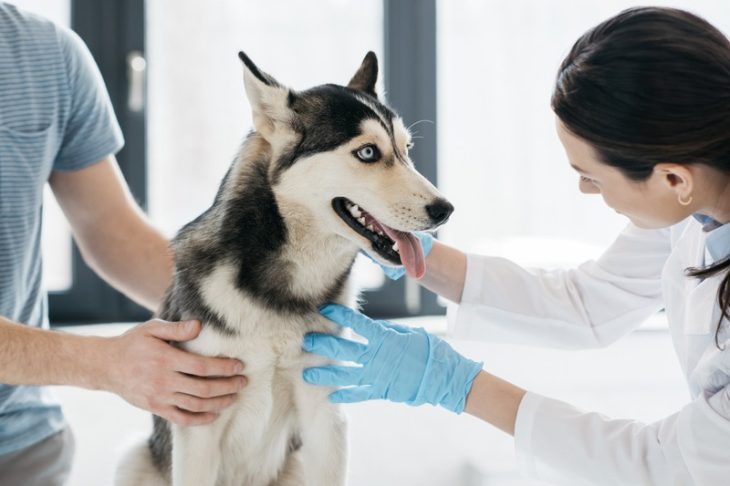Just like humans, pets can experience unexpected medical emergencies at any time. Knowing how to identify the signs of trauma in your pet and understanding when to act promptly can make a significant difference in saving your furry friend’s life. This comprehensive guide is designed to help you recognize and respond to various pet emergencies effectively, ensuring that you are well-prepared to handle such situations. By becoming more informed, you can take the necessary steps to protect your pet’s well-being.
What Is Pet Emergency Trauma
Pet emergency traumas can manifest in various forms, such as physical injuries or sudden illnesses. It’s crucial to be aware of the different types of trauma and their indicators to act swiftly and ensure your pet receives timely professional care.
Types of Trauma
-
Physical Injuries: Cuts, fractures, burns
-
Internal Injuries: Organ damage, internal bleeding
-
Medical Conditions: Seizures, poisoning, heatstroke
Common Signs of Pet Emergency Trauma
Recognizing the warning signs of trauma is essential for timely intervention. Here are some common symptoms to watch out for:
1. Physical Indicators
-
Bleeding or open wounds
-
Swelling or bruising
-
Visible fractures or dislocations
2. Behavioral Changes
-
Excessive whining or barking
-
Unusual aggression or withdrawal
-
Reluctance to move or eat
3. Respiratory Distress
-
Rapid or labored breathing
-
Persistent coughing or gagging
-
Blue or pale gums and tongue
When to Act
Knowing when to act can make a significant difference in the outcome of a pet emergency. Here are some scenarios where immediate action is necessary:
1. Severe Bleeding
If your pet is experiencing severe bleeding, it’s crucial to control the blood loss immediately. Apply steady pressure to the wound using a clean cloth or bandage and seek veterinary care without delay. Quick action is essential to prevent further complications and ensure your pet’s recovery.
2. Difficulty Breathing
Respiratory distress is a critical condition that demands immediate attention. If your pet is struggling to breathe, try to keep it calm and in a comfortable position. Immediately rush your pet to the emergency vet for professional assessment and urgent care to prevent serious complications.
3. Unconsciousness or Non-Responsiveness
If your pet is unconscious or not responding to stimuli, it’s a major red flag. Check their pulse and breathing, attempt to keep them calm, and get professional help as soon as possible.
Preparation for Pet Emergencies
Being prepared can make all the difference during a pet emergency. Here are some tips to get you started:
-
First Aid Kit: Having a pet-specific first aid kit on hand can be incredibly useful. Include items such as bandages, antiseptic wipes, and a digital thermometer.
-
Emergency Contacts: Keep a list of emergency contacts, such as your vet, an after-hours vet clinic, and a local emergency animal hospital. This ensures you’re always aware when you need help.
Preventive Care
While emergencies are sometimes unavoidable, preventive care can significantly reduce the risks. Regular pet vaccinations are essential. Clinics such as Four Corners Veterinary Hospitals emphasize the importance of vaccines in preventing serious illnesses that could lead to emergencies.
Handling Pet Emergencies Calmly
Panic can impede your ability to help your pet effectively. Staying calm and focused is key. Here’s how you can manage your emotions and provide the best care for your pet:
-
Stay Composed: Take a deep breath and assess the situation. Your pet relies on you to be their rock during a crisis.
-
Move Cautiously: Avoid making sudden movements that could further stress or injure your pet. Approach them slowly and gently.
-
Communicate with Professionals: When contacting a vet or emergency service, provide clear and concise information about your pet’s condition. This allows them to prepare for immediate action upon your arrival.
Importance of Regular Check-Ups
Regular veterinary check-ups can help detect potential issues before they become emergencies. This proactive approach ensures your pet remains in optimal health.
-
Monitoring Health Status: Routine check-ups allow vets to monitor changes in your pet’s health over time and offer timely interventions when necessary.
-
Dental Care: Pay attention to dental health. Poor dental hygiene can lead to infections and other complications. Regular vet visits for dental care, like veterinary dentistry in Concord, CA, can help keep your pet’s oral health in check.
Emergency Vet Services
Having access to reliable emergency vet services is crucial in situations where immediate medical attention is required. If you’re ever in doubt, always check this option to ensure your pet receives prompt care.
Final Thoughts
Recognizing the signs of a pet emergency trauma and knowing when to act quickly can be crucial in saving your pet’s life. It is essential always to stay vigilant, prepared, and calm during emergencies. Remember, professional veterinary help is just a call away. By taking preventive measures, such as pet-proofing your home and keeping up with regular vet appointments, you ensure your beloved pet leads a healthy, happy, and fulfilling life. Your proactive care can make all the difference.



